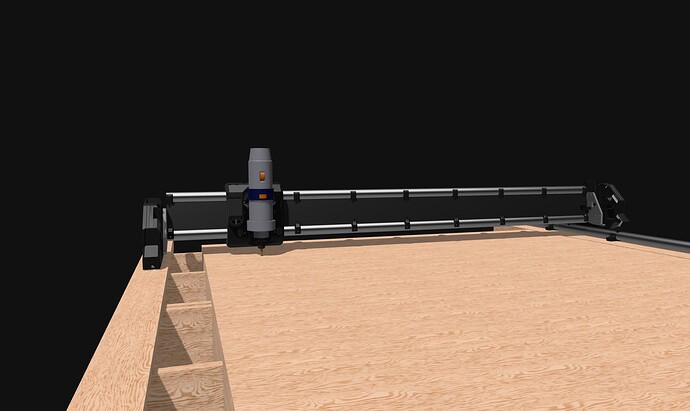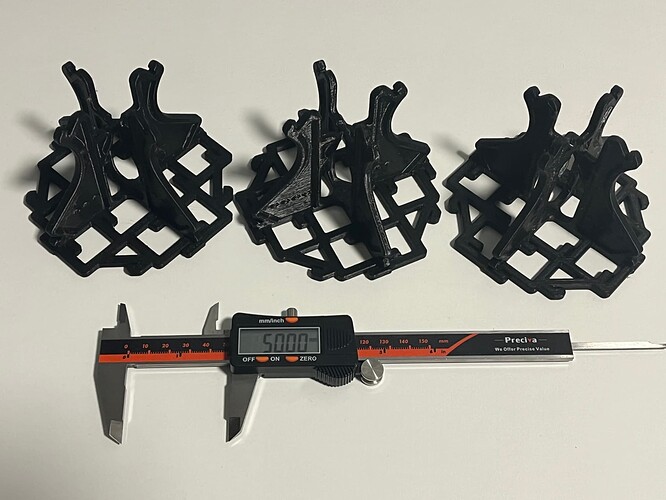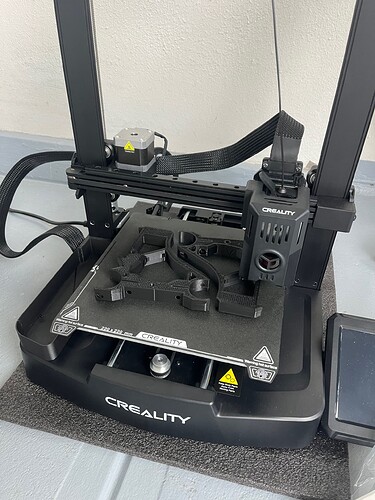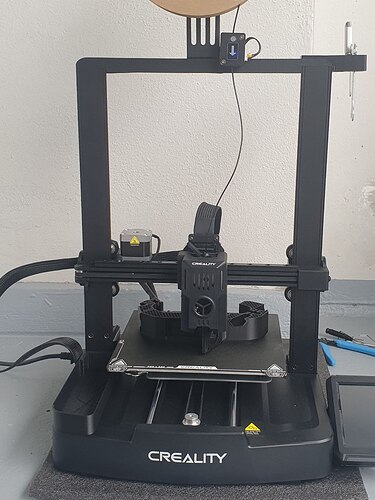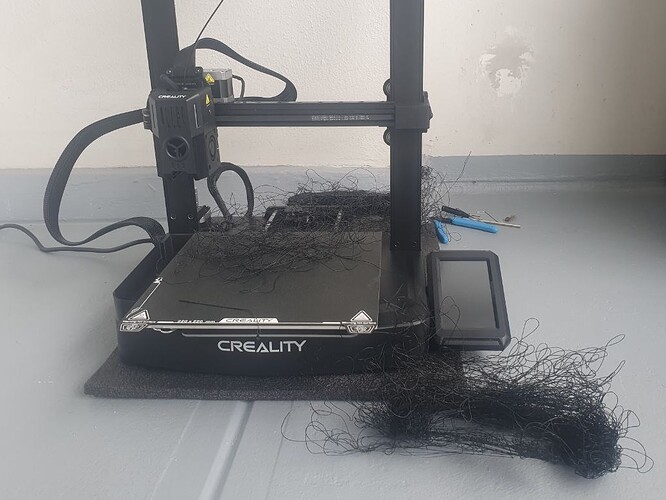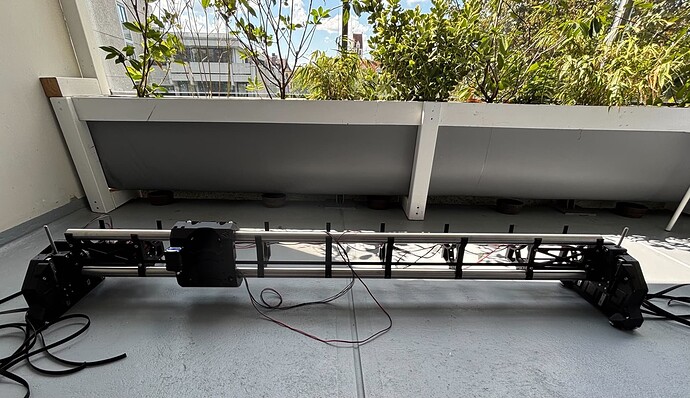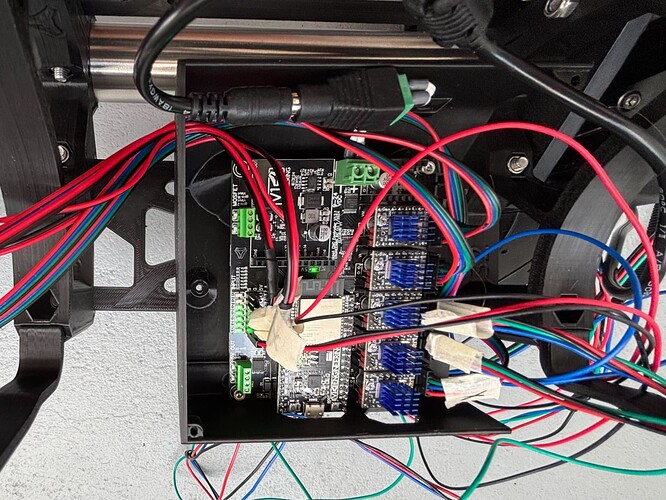A big thank you to Ryan for releasing the latest V1E creation. I somehow got sucked into the hype of the new release while looking for a new bigger CNC that would allow me to cut full sheets of ply.
A little background on me:: My CNC journey started back in my teenage years. I searched the web for a reasonably priced CNC and back then it was very rare to find anything under 3000€.
Since I was still in high school, I was working at the local gas station on the weekends to make a few bucks to fulfill my dream of owning my own CNC. At 6€/hour it took a few months to get the money together and once I had it, I was reluctant to spend it all on a tool. Which is understandable in retrospect, as my friends bought the first used car for about the same amount of money.
After a night out, I ended up at 5am scrolling through ebay for some CNCs when I suddenly stumbled across a used machine for “just” around 2000€. A few clicks later and I owned my first CNC ![]()
Now I faced a new challenge. How to tell my parents, who were going to wake up in about 2h, that we had to drive 300km the next day to pick up the CNC ![]() My parents were surprisingly chill about the purchase. And soon I was sitting in the car with my dad. A few hours later we arrived in the middle of a forest in a vacation home settlement. The seller was an RC enthusiast who bought the CNC for himself but never got it to work.
My parents were surprisingly chill about the purchase. And soon I was sitting in the car with my dad. A few hours later we arrived in the middle of a forest in a vacation home settlement. The seller was an RC enthusiast who bought the CNC for himself but never got it to work.
The condition of the machine was questionable, but somehow I got the old win95 computer started and to my surprise got the CNC to move a few millimeters. It was the only time I ever got it to move with the even for those days outdated hardware and software. I paid cash and had all my hard earned money in an envelope. I handed it to the seller, he looked at me, said I trust you and put the wallet in his pocket ![]() My mouth fell open because I had just made my biggest purchase ever and he didn’t even think about counting the bills.
My mouth fell open because I had just made my biggest purchase ever and he didn’t even think about counting the bills.
After a long drive home, I started to disassemble everything. And many days later I finally got LinuxCNC configured and the machine was moving for the second time. It was a long road to get my workflow up and running. It was far from perfect, but good enough to start building my first projects. After finishing high school I had some time to build a multicopter, which taught me a lot.
I was so fascinated by the ability to create parts that I changed my plans from studying computer science to mechatronics just before the deadline for applying to university. Once Uni started my CNC didn’t quite receive the love it deserved. My priorities had shifted and little freetime was left, as the engineering course took all my attention.
Things took a turn in 2020 when I was ready to pack my bags and head to the States to write my master’s thesis in robotics at CMU. The last exams I had to take before jumping on the plane were canceled and studying abroad was completely off the table. However, I finally had time for my CNC again. I rebuilt it from the ground up and gave it new GRBL based electronics because it was getting harder and harder to find computers that could control it via the parallel port.
The new electronics made it much easier to use. Some limitations didn’t change. The small lead screw diameter limited the maximum speed and the build size of 1000*400mm limited the size of my dreams. I always wanted to go bigger and faster. I don’t need a super rigid machine as I mostly cut wood, but it shouldn’t be a big step down from the current machine in terms of precision.
I was researching the web for my next CNC. I stumbled upon the Maslow, but it seemed a bit imprecise to me. I looked into building an large all ballscrew driven machine. But even now, working as an IT consultant, the price tag is still a bit too much for my taste and the space required to store it would be even more challenging to find.
Everything changed when I stumbled across the Lowrider V3 and immediately fell in love with the concept. Easily taken of the bed for storage, suitable for full sheet cutting and a price tag thats half of what i spent 12 years ago.
There was just one issue the 25mm tubes seemed a bit too flimsy for my taste. I loaded up the parts in the CAD and checked if i could upscale the tubes a bit until, i read something about the LR4. As soon as i saw the first video i was hooked. That’s it that’s my next CNC.
In the following days I read every new post on the status. I ordered my first 3D printer to print the parts as soon as they would be published. I guess many of you come from the other direction, starting first with 3D printing and then transitioning to CNC cutting. For me I was surprised how easy it is to get started into 3D printing. Within 2h of receiving the package, the printer was chunking out parts and the same day it was fully set up.
In the next couple of posts I will document my build journey step by step.
